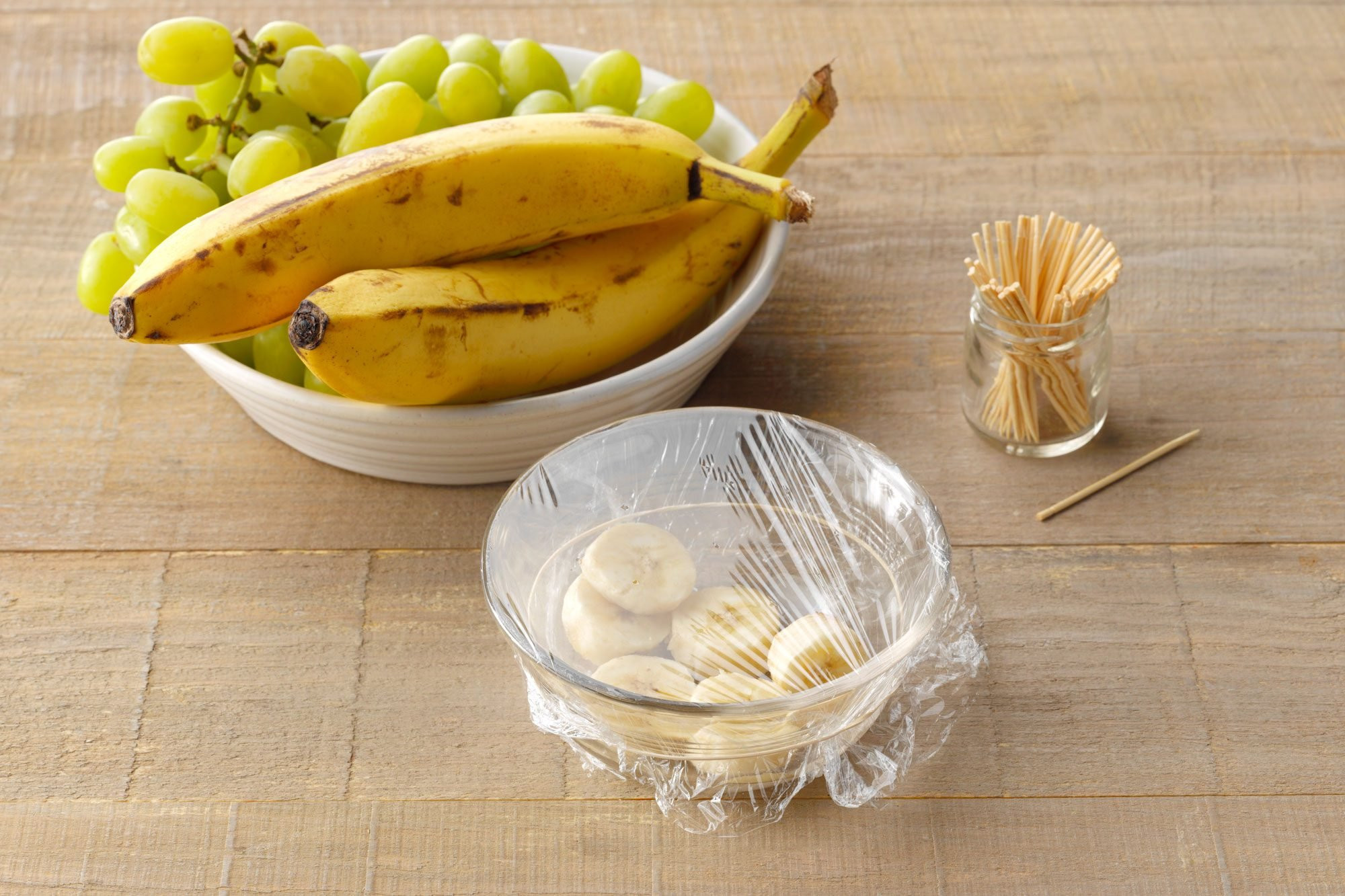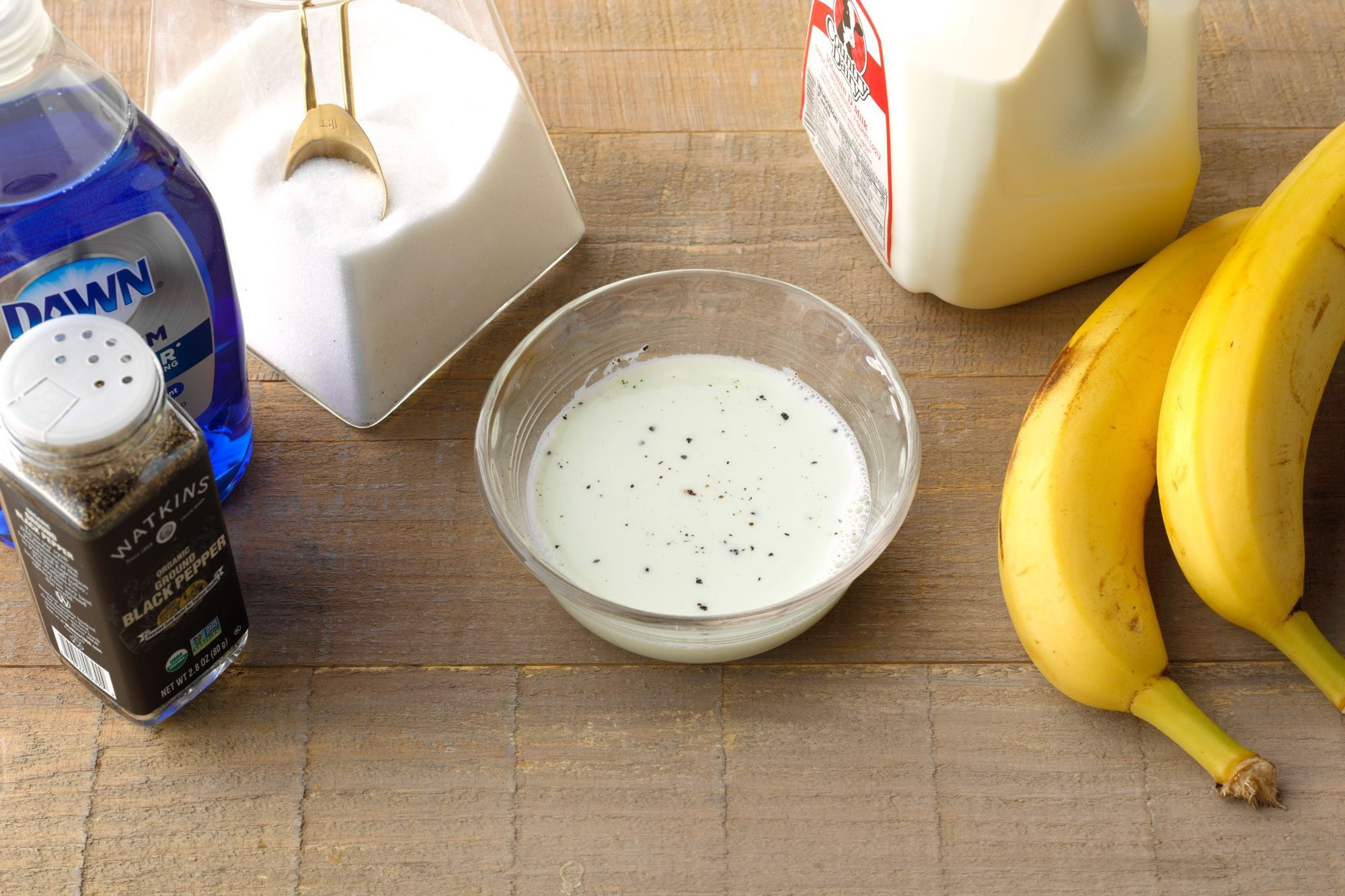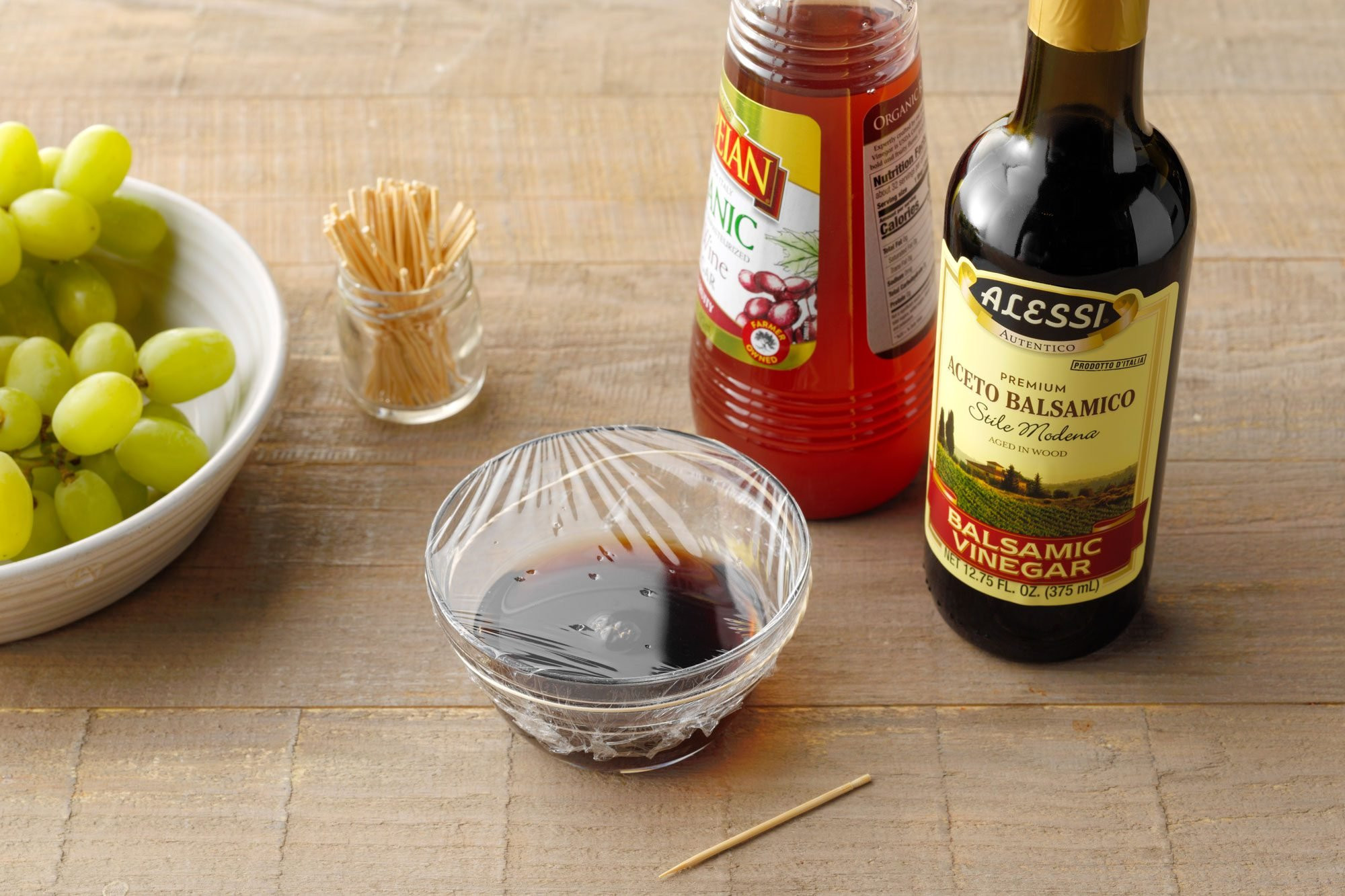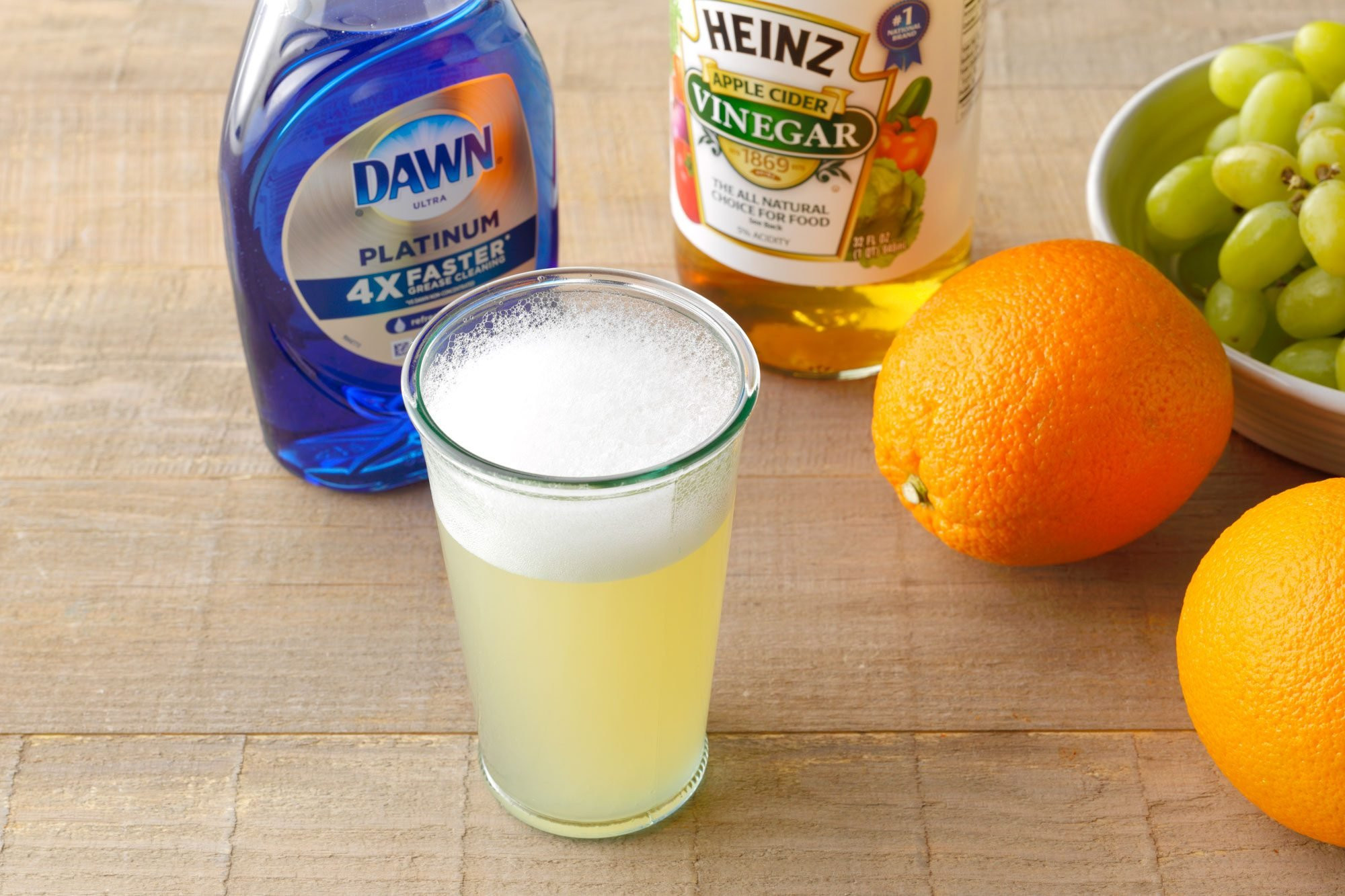Fruit flies. Those tiny, annoying pests that seem to materialize out of thin air, especially when you’ve got a bowl of ripe fruit sitting out. One day, your kitchen is fruit fly-free, and the next, they’re buzzing around your bananas like they own the place. You might wonder, “How Do You Attract Fruit Flies so suddenly?” The truth is, you’re likely attracting them without even realizing it. Perhaps a few fruit fly eggs hitched a ride on your groceries, or maybe that forgotten compost bin became the perfect breeding ground. Whatever the cause, once they’re in, getting rid of them becomes the priority.
Like many, I found myself in a fruit fly battle. Determined to reclaim my kitchen, I turned to the internet for solutions and stumbled upon a treasure trove of homemade fruit fly trap recipes on Pinterest. To find the most effective solution, I decided to put five of the most popular DIY fruit fly traps to the test, using common household items. Knowing fruit flies are drawn to the vinegars in my pantry, I set up my experiment there, giving each trap 12 hours to work its magic. Here’s what I discovered.
Understanding What Attracts Fruit Flies
Before diving into the traps, it’s helpful to understand what draws these tiny insects into your home in the first place. Fruit flies are primarily attracted to fermenting fruits and vegetables. This is why you often see them swarming around ripe bananas, overripe tomatoes, or even spilled juice. The strong, sweet, and slightly acidic odors of fermentation are irresistible to them.
But how do they even get inside? Often, fruit flies are unknowingly brought into your home on produce you buy from the grocery store. Their eggs or larvae can be present on the surface of fruits and vegetables. Once inside your warm kitchen, they quickly mature and start breeding.
And breed they do – rapidly! A single female fruit fly can lay up to 500 eggs, and these eggs can hatch in as little as a week. This rapid reproduction is why a small fruit fly problem can quickly escalate into a major infestation.
Simply throwing out infested fruit isn’t enough. Fruit flies can continue to breed in garbage disposals, drains, and even trash bags, seeking out any source of fermentation. Therefore, a multi-pronged approach, including traps and preventative measures, is key to effectively managing fruit flies.
Testing 5 DIY Fruit Fly Traps
My quest to eliminate fruit flies led me to experiment with five different homemade traps, each using readily available household ingredients. Here’s a breakdown of each trap, its setup, and its effectiveness.
Trap 1: The Rotten Fruit Bowl
 rotten fruit trap method. bowl of rotten banana slices in a bowl covered with plastic wrap that has had toothpick holes poked into it. wood surface background with bananas and grapes nearby.
rotten fruit trap method. bowl of rotten banana slices in a bowl covered with plastic wrap that has had toothpick holes poked into it. wood surface background with bananas and grapes nearby.
Potential Benefits: Uses a natural fruit fly attractant, inexpensive, and repurposes overripe fruit.
Materials:
- Overripe fruit (banana, peach, etc.)
- Bowl
- Plastic wrap
- Rubber band
- Toothpick
Instructions:
- Place chopped, overripe fruit in the bowl.
- Cover the bowl tightly with plastic wrap and secure it with a rubber band.
- Poke several small holes in the plastic wrap using a toothpick. These holes should be large enough for fruit flies to enter but small enough to prevent their escape.
Fruit Flies Captured: 0
Surprisingly, this trap yielded zero fruit flies. Despite using the very thing that attracts them – rotten fruit – the flies seemed uninterested in entering the trap. Perhaps the small toothpick holes were too deterrent, or maybe the scent wasn’t effectively escaping.
Trap 2: Milk, Sugar, Dish Soap, and Pepper Mixture
 trap 2 mixture in a bowl with the supplies arranged nearby on a wooden surface
trap 2 mixture in a bowl with the supplies arranged nearby on a wooden surface
Potential Benefits: Utilizes common pantry staples, good use for milk nearing expiration.
Materials:
- ½ cup milk
- 2 teaspoons granulated sugar
- Dish soap
- Black pepper
- Bowl
Instructions:
- Combine milk and sugar in a bowl.
- Heat the mixture on the stove or in the microwave, stirring until the sugar dissolves completely.
- Stir in a squirt of dish soap (this reduces surface tension, trapping the flies).
- Pour the mixture into a bowl.
- Sprinkle black pepper over the surface.
Fruit Flies Captured: 3
This trap captured a few fruit flies, but it was difficult to monitor effectively. Distinguishing between dead fruit flies and specks of black pepper proved challenging. The milk and sugar likely acted as an attractant, but the pepper’s role in this trap remained unclear.
Trap 3: Balsamic and Red Wine Vinegar Blend
 trap 3 mixture in a small glass bowl covered with plastic wrap that has holes poked into it. fresh grapes, toothpicks, red wine vinegar bottle, and balsamic vinegar bottle nearby. all on a wooden surface
trap 3 mixture in a small glass bowl covered with plastic wrap that has holes poked into it. fresh grapes, toothpicks, red wine vinegar bottle, and balsamic vinegar bottle nearby. all on a wooden surface
Potential Benefits: Quick to assemble, easy to clean up afterward.
Materials:
- Balsamic vinegar
- Red wine vinegar
- Bowl
- Plastic wrap
- Rubber band
- Toothpick
Instructions:
- Mix equal parts balsamic and red wine vinegar in a small bowl.
- Cover the bowl tightly with plastic wrap.
- Secure the plastic wrap with a rubber band.
- Poke a few small holes in the plastic wrap, similar to Trap 1.
Fruit Flies Captured: 0
Despite the fruit flies’ apparent fondness for my vinegar bottles, this vinegar-only trap was another zero-capture experiment. Perhaps the combination of vinegars wasn’t as appealing as expected, or again, the plastic wrap barrier hindered effectiveness.
Trap 4: Dish Soap, Apple Cider Vinegar, and Hot Water Powerhouse
 sudsy trap 4 mixture in a glass with dawn dish soap, apple cider vinegar bottle, and fresh fruit nearby on a wooden surface.
sudsy trap 4 mixture in a glass with dawn dish soap, apple cider vinegar bottle, and fresh fruit nearby on a wooden surface.
Potential Benefits: Fast setup, uses common household items, simple cleanup.
Materials:
- Dish soap
- Apple cider vinegar
- Glass
- Hot water
Instructions:
- Squirt a small amount of dish soap into a glass.
- Add apple cider vinegar until the glass is about one-third full.
- Run hot tap water until steaming, then quickly pour it into the glass to create a thick layer of bubbles on top.
Fruit Flies Captured: 18
This trap was the clear winner! Fruit flies that had previously ignored the rotten fruit trap flocked to this one. The apple cider vinegar is a known attractant, and the dish soap breaks the surface tension of the water, causing the flies to drown when they land. The hot water helps create a soapy bubble layer, which seems to enhance the trapping effect. I did need to replenish the bubbles periodically as they dissipated.
Trap 5: Beer and Rotten Banana Brew
 trap 5 set up in a glass jar with toothpicks, bottle of beer, and fresh fruit nearby on wooden surface
trap 5 set up in a glass jar with toothpicks, bottle of beer, and fresh fruit nearby on wooden surface
Potential Benefits: Another way to use overripe fruit, and an excuse to use up unwanted beer.
Materials:
- Rotten banana
- Jar
- Beer
- Cone-shaped coffee filter
- Toothpick
Instructions:
- Place a piece of rotten banana in the bottom of a jar.
- Pour in enough beer to partially cover the banana.
- Take a coffee filter and poke a small hole in the pointed bottom.
- Place the filter cone-down into the jar opening, folding the edges over the jar rim to hold it in place. This creates a funnel, allowing flies in but making it harder to get out.
Fruit Flies Captured: 3 dead, 5 alive
This trap showed some promise, capturing a few dead flies and a few live ones still buzzing around inside. The beer and banana combination likely attracted the flies, and the coffee filter funnel worked to trap some. However, it wasn’t as effective as the apple cider vinegar and dish soap trap. The live flies suggested they could potentially escape.
Trap Test Results and the Ultimate Fruit Fly Solution
Trap No. 4, the dish soap, apple cider vinegar, and hot water trap, was the undeniable champion. I was genuinely pleased to see its success, diligently counting the increasing number of trapped fruit flies each time I checked.
Trap No. 5, the beer and banana trap, shows potential for improvement. To enhance its effectiveness, adding a squirt of dish soap to the beer and using the plastic wrap cover method from Trap No. 1 might be beneficial. This could trap the flies more effectively and prevent escapes.
My experience led me to refine the winning Trap No. 4 even further. Initially, I used a juice glass, but the bubbles required frequent refreshing. Switching to a pint glass, while using more vinegar, resulted in longer-lasting bubbles and a more hands-off fruit fly elimination process.
I also experimented with different types of apple cider vinegar – filtered and raw, unfiltered. The unfiltered variety proved more effective, likely due to the presence of fermented apple particles, which are even more attractive to fruit flies.
Preventing Future Fruit Fly Infestations
While traps are effective for dealing with existing fruit flies, prevention is key to avoiding future infestations. The easiest way to prevent fruit flies is to manage ripe fruits and vegetables proactively. Use ripe produce promptly. If you want to extend their shelf life, store ripened fruits and vegetables in the refrigerator. This cooler environment slows down ripening and reduces the odors that attract fruit flies.
When discarding overripe or inedible produce, take the trash out immediately. Don’t let it sit in your kitchen, providing a breeding ground for these pests.
By understanding what attracts fruit flies and employing both traps and preventative measures, you can effectively manage and eliminate these annoying kitchen invaders and keep your home fruit fly-free.